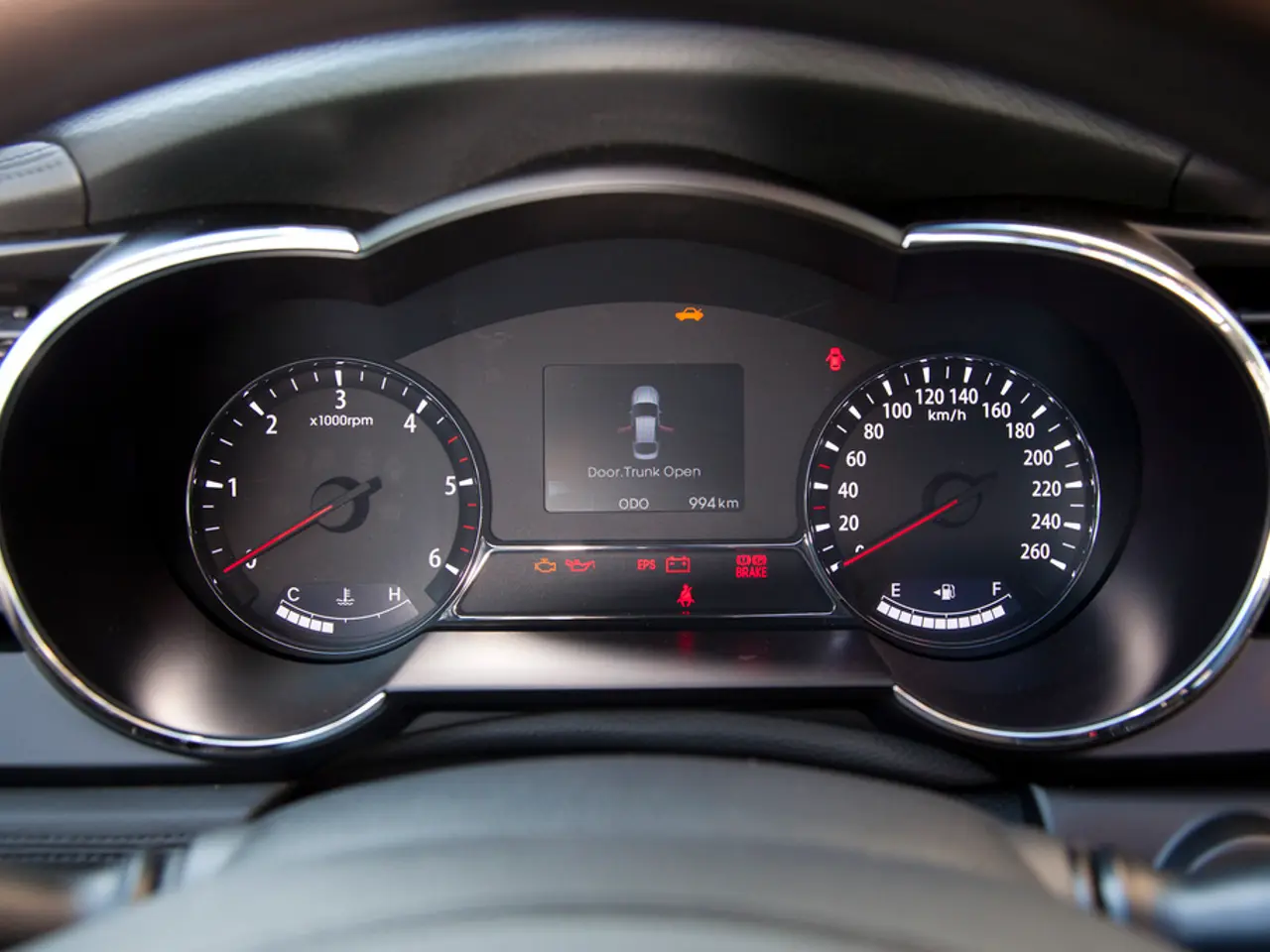Digital Integration in Automotive Sensors: A Spice of Modern Technology in Mechanical Workings
The automotive industry is witnessing a significant shift, with the integration of high-end sensors playing a pivotal role in this transformation. These sensors, designed for autonomous vehicles, are set to boost the market, particularly in segments such as passenger cars, which currently hold a major share [1].
The advanced communication capabilities of these vehicles are dependent on real-time data gathered from automotive sensors. This data enables the connected car, allowing for real-time data transfer, assisting in monitoring vehicles and drivers [2].
Enhancing Safety and Autonomy
The latest advancements in automotive sensor technology focus on improving accuracy, intelligence, and multi-modality to enhance both modern and autonomous vehicles' design and functionality. Key developments include:
- Multi-sensor fusion with edge AI processing: Autonomous vehicles are increasingly using combined data from lidar, radar, cameras, and emerging sensors processed in real-time within the vehicle (edge AI) rather than relying on cloud computing. This enables faster and more reliable perception and decision-making critical for driverless mobility [1][4].
- Next-generation radar technologies: Frequency-Modulated Continuous Wave (FMCW) radar is being developed for direct velocity measurement and better object differentiation, though it remains in R&D phase. Meanwhile, 4D imaging radar adds vertical resolution for detailed environment mapping, already applied in premium advanced driver-assistance systems (ADAS) and specialized robots [2].
- Acoustic sensors: Beyond visual and radio sensors, acoustic sensors are emerging for detecting sounds like emergency sirens or horns, enhancing situational awareness in complex environments. They also provide a complementary channel for vehicle-to-vehicle communication and can create personalized acoustic zones inside vehicles to reduce driver distraction [3].
- AI integration with sensor data: AI algorithms analyze sensor inputs to create rich environmental maps, predict behaviors of pedestrians and vehicles, and make real-time decisions. This integration improves vehicle safety, navigation, and adaptability to changing conditions [4].
- Connectivity and communication: 5G and Vehicle-to-Everything (V2X) communication modules paired with embedded cybersecurity chips enhance predictive, interconnected driving ecosystems while safeguarding data [1].
Transforming Vehicle Design and Functionality
These innovations significantly influence vehicle electronics architecture and user experience. Today's vehicles incorporate over 100 electronic control units (ECUs), orchestrating everything from powertrain management to advanced sensing, which transforms the car into a complex, intelligent system versus traditional mechanical designs [1].
Enhanced ADAS features like lane-keeping, adaptive cruise control, and emergency braking improve safety and driver convenience, paving the way for scalable autonomous mobility solutions [1][4]. The use of advanced sensors and AI allows vehicles to perceive and respond to their environment more like human drivers, improving safety in dense urban and mixed traffic scenarios [3].
The combination of multi-modal sensors supports continuous, reliable communication between vehicles and infrastructure, essential for coordinated autonomous fleet operation and traffic efficiency [3][4].
Driving the Future of Automotive Technology
In summary, automotive sensor technology advancements create smarter, safer, and more autonomous vehicles by combining improved sensing modalities (radar, lidar, acoustic), integrated AI for perception and decision-making, and robust connectivity. These innovations significantly influence vehicle electronics architecture and user experience, accelerating the transition to fully autonomous and connected transportation systems [1][2][3][4].
Moreover, the demand for automotive sensors is driven by factors such as miniaturization and IoT technology. Emerging economies such as the U.S., France, and U.K are leading the automotive sensors market. Technological giants are developing self-driving vehicles with features like rotating roofs for 360-degree visibility and precise data measurement.
As the industry continues to evolve, we can expect to see further advancements in sensor technology, paving the way for a future where autonomous vehicles become the norm.
References:
[1] "Automotive Sensors Market to 2027 - Global Analysis and Forecasts by Material, Sensor Type, Application, and Region" - ResearchAndMarkets.com [2] "Next-generation radar technologies for autonomous vehicles" - U.S. Department of Transportation [3] "Acoustic Sensors for Autonomous Vehicles" - Fraunhofer Institute for Microelectronics and Information Systems [4] "AI Integration with Sensor Data in Autonomous Vehicles" - Siemens Mobility
- The controlled impedance in these advanced sensors is essential for the reliable and accurate real-time data transmission required for connected cars.
- Manufacturing processes must be refined to meet the increasing demand for automotive sensors, as their integration into vehicles becomes more widespread.
- In the realm of finance, investors are closely watching the growth of the automotive sensors market, seeking opportunities for returns in this burgeoning industry.
- The transportation sector stands to benefit immensely from the adoption of autonomous vehicles, as they can significantly reduce traffic congestion and fatalities.
- As people's lifestyles become increasingly technology-driven, embracing electric vehicles will become less of a luxury and more of a practical choice.
- In the world of automotive, sensors’ role extends beyond passenger cars, playing a significant part in the development of automated commercial vehicles as well.
- Personal finance education and self-development resources can help individuals make informed decisions about the best time to purchase a new electric vehicle or invest in the industry.
- Home-and-garden businesses can innovate by integrating smart sensors into appliances for improved energy efficiency, connectivity, and automation.
- The business opportunities in real-estate for fleet management and autonomous- vehicle parking facilities are substantial and unexplored, attracting investors seeking growth in this sector.10.In data-and-cloud-computing, automotive sensors’ role is crucial, fueling the development of AI and machine learning processes that drive autonomy.11.As technology continues to evolve, sports audiences can engage in more immersive and interactive experiences through sports-betting platforms powered by AI and real-time analytics derived from automotive data.12.Car maintenance businesses can leverage technology and learning to offer maintenance services for electric vehicles, catering to the growing demand for these eco-friendly vehicles.




